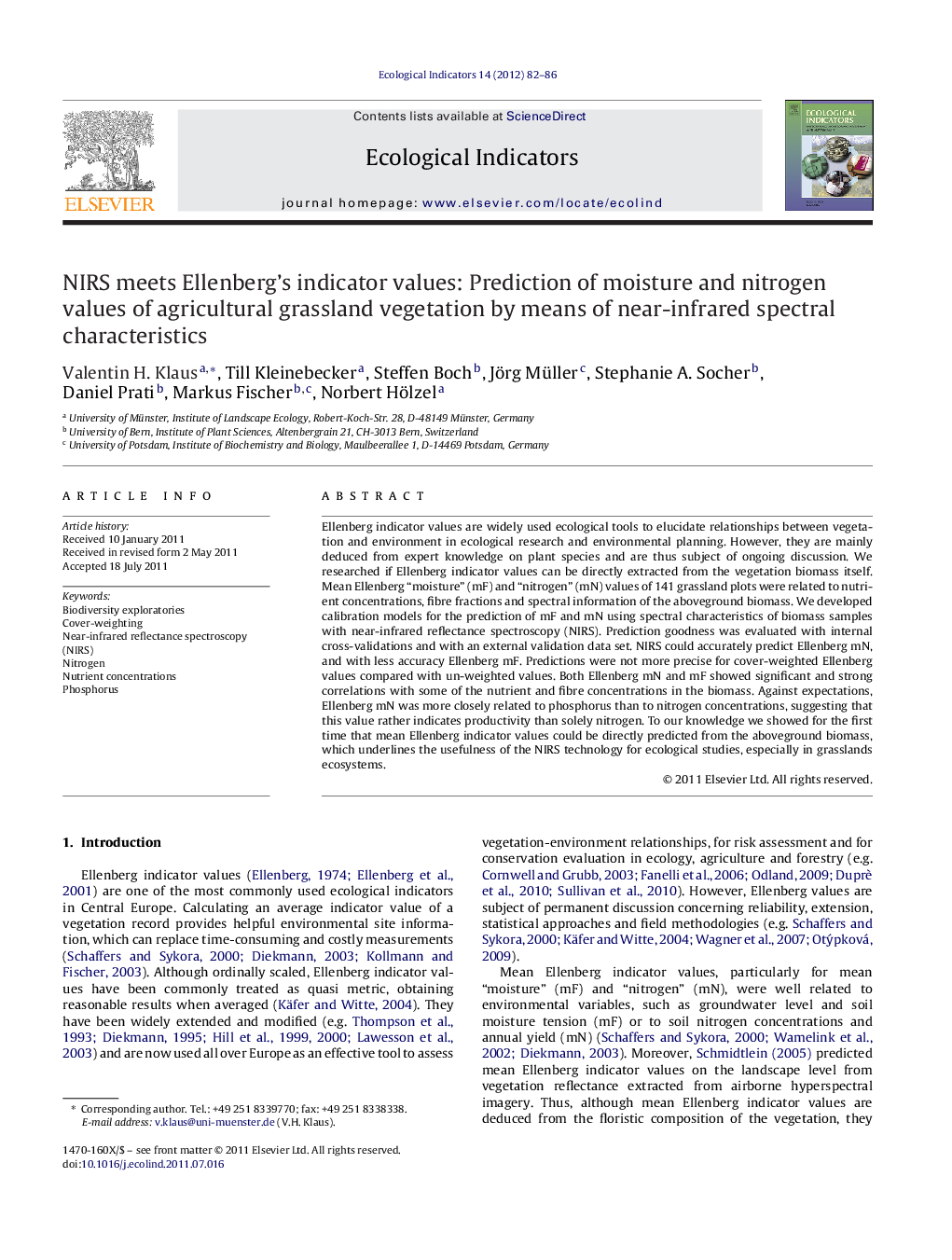| Article ID | Journal | Published Year | Pages | File Type |
|---|---|---|---|---|
| 4373886 | Ecological Indicators | 2012 | 5 Pages |
Ellenberg indicator values are widely used ecological tools to elucidate relationships between vegetation and environment in ecological research and environmental planning. However, they are mainly deduced from expert knowledge on plant species and are thus subject of ongoing discussion. We researched if Ellenberg indicator values can be directly extracted from the vegetation biomass itself. Mean Ellenberg “moisture” (mF) and “nitrogen” (mN) values of 141 grassland plots were related to nutrient concentrations, fibre fractions and spectral information of the aboveground biomass. We developed calibration models for the prediction of mF and mN using spectral characteristics of biomass samples with near-infrared reflectance spectroscopy (NIRS). Prediction goodness was evaluated with internal cross-validations and with an external validation data set. NIRS could accurately predict Ellenberg mN, and with less accuracy Ellenberg mF. Predictions were not more precise for cover-weighted Ellenberg values compared with un-weighted values. Both Ellenberg mN and mF showed significant and strong correlations with some of the nutrient and fibre concentrations in the biomass. Against expectations, Ellenberg mN was more closely related to phosphorus than to nitrogen concentrations, suggesting that this value rather indicates productivity than solely nitrogen. To our knowledge we showed for the first time that mean Ellenberg indicator values could be directly predicted from the aboveground biomass, which underlines the usefulness of the NIRS technology for ecological studies, especially in grasslands ecosystems.
► Prediction of Ellenberg N and F values with near-infrared reflectance spectroscopy. ► Relating Ellenberg mN and mF to chemical composition of grassland biomass. ► NIRS-calibrations gained better results for mN compared to mF. ► Cover-weighted indicator values did not perform better than un-weighted. ► Ellenberg mN is more closely related to P than to N in grassland biomass.
